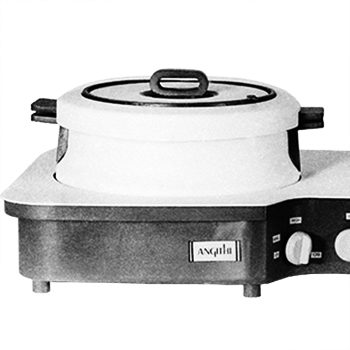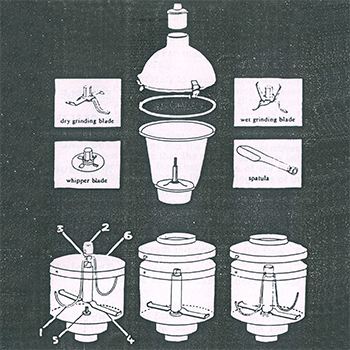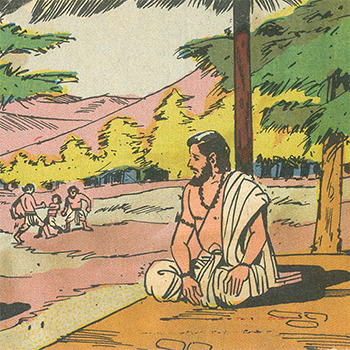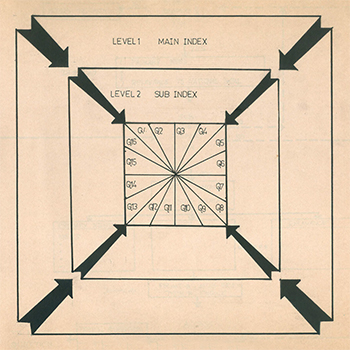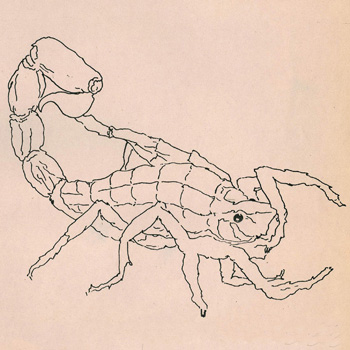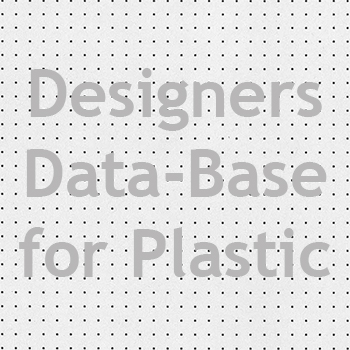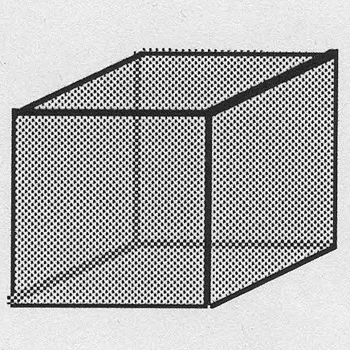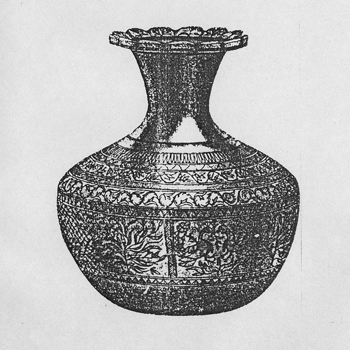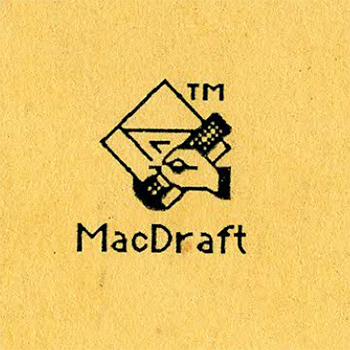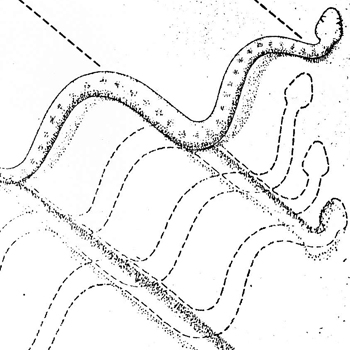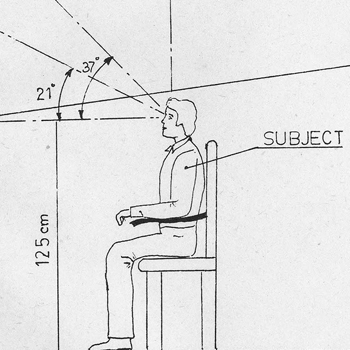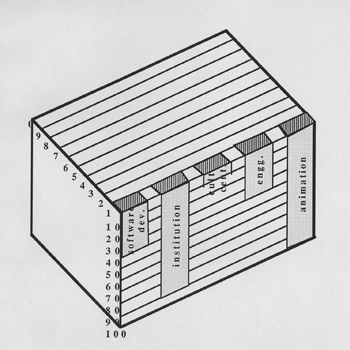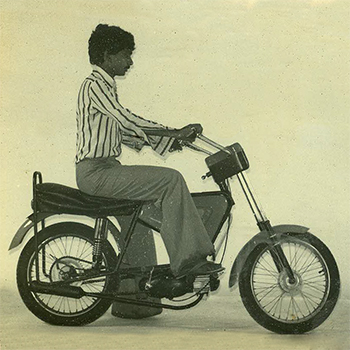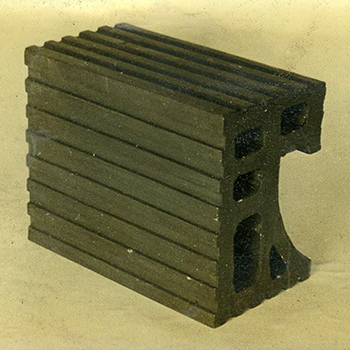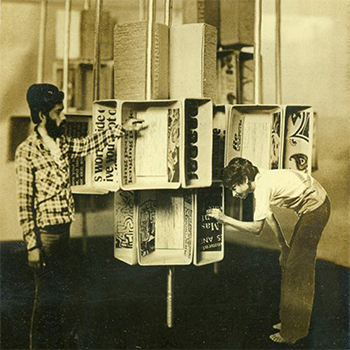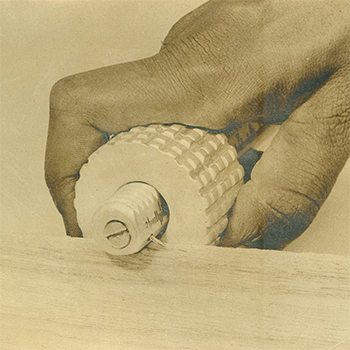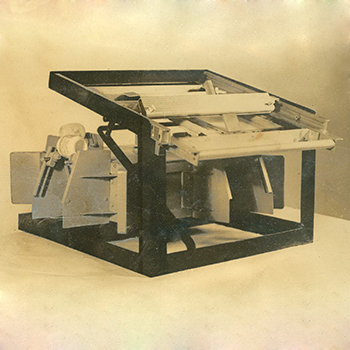Product Design 1979-1988
Batch 1983-1985
(1 items)
Batch 1982-1984
(1 items)
Batch 1984-1986
(11 items)
Batch
(3 items)
Batch 1986-1988
(9 items)
Batch 1977-1979
(6 items)
Product Design 1979-1988
1983-1985
(1 items)
by Umesh V Nevgi
1982-1984
(1 items)
by Kulkarni, Abhimanyu
1984-1986
(11 items)
by Atul I Kedia
by Dipan Shah
by G. N. Sairam
The concept of industry in India has a very short history, dating back to the early 20th century. It is only in the post-British period that industry has seen the light of day. The government has encouraged industries, big and small, public and private, to develop the country. The new legislation coming into force in the very recent past is bound to give a dramatic boost to the process of industrialization. Old concepts and ideas will be replaced by modern, radical, and fast-paced ones. Newer methods of production and better quality standards will be the order of the day. Industries that lag behind may be allowed to sink rather than pumped with precious resources. Similarly, the people employed in the industries will also have a very demanding period. Is the industry prepared to meet the oncoming challenge? Are the people prepared for the onslaught? Where do they stand? What does it take to cope? Who is responsible? What are the shortfalls? These and many more questions come to one’s mind when one sees the revolution that is sweeping the Indian industrial scene. Gone are the days when one could sit back and watch the world go by. The "Timelessness" of Indian philosophy does not appear to be valid in the Indian industry.
If the output of the industries is to be of a high order, the input has to be thoroughly scrutinized. The various inputs to the industry can be broadly classified into "tangibles" and "intangibles." Obviously, tangibles are those that are apparent and measurable. It is with the intangibles that one runs into a problem. To begin with, it is not apparent or measurable. Secondly, their influence on the output is also very difficult to gauge. Given this situation, one naturally tends to neglect this very important area, which will only become known over a long period of time, when it may be too late to take any corrective action. It leads one to assume that past neglect may be one of the main reasons for the present state of affairs in the industry. Among the various intangibles that affect industry and human beings, the environment is one of them. There is an old adage which says that the environment can make a man or break him. Hence, its importance need not be overstressed. A man spends a major chunk of his productive time at work, either going to the place or coming back, or in the workplace itself. This place plays an important role in moulding his mental attitude. This psychological aspect of one’s life is one of the main intangible inputs to the industry. An attempt has been made to portray this important environmental dimension.
by Hittalmani Vishwas
by Kashmira Rathod
It is an inherent, original capacity imbibed within all of us that often makes us exclaim "beautiful," "wonderful," and so on in rapturous tones, stumbling upon the creation of nature and man himself alike. We can term this capacity aesthetic sensibility. So natural is this trait with us and apparently so singular in its outcome (i.e. the exclamations), that none of us would be able to divulge any information as to why we find something or someone beautiful. The simplicity is merely a byproduct of a highly complex process, which has so far received extensive research and has been thoroughly discussed in a text written by a few psychologists. It would still be useful here to go through some fundamental theories.
Naturally, the first question that arises is: what is it in creation that makes us exercise our aesthetic sensibility? According to analysis, there are some distinct elements in the creation that work either individually or collectively to stimulate our senses. For example, there are various orientations of an object in a given space. All the orientations do not appear balanced to our eyes. But on the other hand, if there are various objects, then relatively, they may appear balanced or otherwise. This concept of balance is co-related to other concepts like scale and proportion. The eye has its own measure of comparing the sizes and volumes of positive and negative spaces, and this measure results in an effect of balance or imbalance on the psychology. Similarly, multidirectional symmetry, etc., which involves perception of propotions of various elements in an object (for example, the human body), To the perception of a particular form is attached the concept of pattern and its rhythm resulting from the repetition of units, and the whole effect may be one of harmony, where there is a definite connection between a whole and a part (for example, the various notes in music).
by Peer Mohideen Sathikh
Education has been an important priority of the government of India. However, schools, colleges, and the educational system as a whole have much to be desired. There have been many attempts to improve the educational system using educational aids like 16-mm projections, etc. But these attempts have not come to widespread use in India. This may be attributed to a multitude of reasons, the most important being the total number of schools in India.
A time has come in which one will have to give serious thought to education improvement. New possibilities will have to be thought of which are not only technically feasible but also economically feasible. One such possibility is the comic strip medium. Comics have the advantage of being economical while, at the same time, enjoying popularity. In this project, an attempt has been made to study the possibility of using comics as an educational aid. While this seems like a novel idea in the beginning, one will realise the problems that will arise when implemented. For one, the image of comics as cheap entertainment will have to be changed and a cleaner image will have to emerge. This project aims at determining the factors that make it popular with everyone and identifying the possible problems that will have to be solved. As a final output, a lesson has been attempted in comic strip form using the findings of the earlier studies.
by M. V. Simhan
In today’s complex society, having knowledge of computer-based information systems is important for a man to take decisions. An information system is a set of organised procedures which, when executed, provide information to support decision-making. It can also be defined as a tangible or intangible entity that serves to reduce the uncertainty of future events. The need for a computer-based information system was due to the explosion of information input and the need to access and extract the required information, where as in a manual system, it can never be completely documented.
The checklist is a guiding path and triggering mechanism for a designer when placed in a problem situation. In this type of situation, there is a need for the designer to think of new innovative solutions under various constraints and also consider all the various design factors. Before the design is finalized, a checklist would allow the designer to become familiar with various aspects of the problem and identify the cause.
by Nilesh T. Desai
Much of our knowledge of what is around us depends on touch as well as sight. Our fingers react to rough and smooth surfaces, hard and soft, just as our eyes respond to form and colour. It is accepted that all cutaneous (skin) experiences such as itch, burn, stickiness, vibration, wetness and dryness, roughness and smoothness are due to simultaneous arousal of two or more of the primary skin senses. Touch is one of them.
We are mostly dealing with the visual sense and the visual imagery of the products, which gets quite emphasised in the "design world". But what kind of ‘product-images’ are formed in our minds due to our tactile sense is quite unknown. And the present project is an attempt to visualise and represent the ‘Tactile Image’ of a product. Such tactile images can open up new formal possibilities for designers. The sensation of touch usually results from the mechanical distortion of various types of sensory receptors in the skin. There are more touch receptors on the tongue and fingerprints than in other body areas. With this as background , I have chosen one of the personal products—a tooth brush—and attempted to represent its tactile image as best as I could. The reason for choosing a "tooth brush" is that it comes into contact with the tongue and fingertips, where more touch receptors are situated.
by Nitin Urdhwareshe
Every day, we hear a variety of musical compositions, including commercial jingles, nursery rhymes, and pure classical music.One kind of music is different from the other. We respond to musical compositions in various ways. Some we hum, some we like, some we dislike, some are monotonous, and some compositions are considered simple while others are complex.
If we generally divide musical compositions into categories like vedic recitations, nursery rhymes, folk, tribal, advertisement jingles, film songs, semi-classical music, and classical music (there can be other groups also if we consider western music), we can say that the degree of complexity of the musical composition is different in all these compositions. Vedic compositions sound very different from, say, a film song. Similarly, pure classical music sounds very complex. The complexity of a musical composition can be treated as one of the important variables of composition. What makes these complex or simple? How can we control the degree of complexity? Intuitive answers to these questions can be given. However, this study attempts to systematically investigate the complexity of musical and visual compositions.
Let us first try to understand complexity. It can be found in a lot of things. Just now we were discussing complexity in music. Likewise, a painting can be complex or simple to understand. Thus, complexity exists in visual compositions also. Some smells can be simple to detect, some can be complex. Some ideas can be simple enough to be converted into reality; some may be just too complex to even understand or explain. Many examples can be added to this list. Out of these, visual complexity and audio complexity are considered very close to each other. They are supposed to behave similarly in many areas and can be studied in relation to each other. We can define complexity in many ways. A composition can be semantically complex or structurally complex. This study deals only with the structural complexities of visual and audio compositions, using a direct subjective judgement of complexity by subjects or listeners, and reflects the difficulty experienced in encoding of patterns or the relationship between the compositions. One of the ways to study complexity is to give people different specially designed compositions and ask them to rate the complexity on a scale. Since the compositions are developed by controlling the variables, it is possible to study what factors are giving them that particular degree of complexity and how these factors can be predictably controlled to control the overall complexity. This is the general approach followed in this project.
by Sanjay Jain
by Augustine Shelke
Strictly speaking, one cannot predict the future. Yet a lot of attempts and efforts are made all over the world, especially in the U.S. and other leading countries, to predict the future for many reasons. One of the reasons is the curiosity of man to peep into the future. Writers of science fiction and scientists have dealt with this subject of predicting the future. The former gives free play to their imaginations and, in contrast, the latter tries to keep within the limits of nature, the known present day state of affairs, and then extrapolates to the future. This prediction could be made only for a period of 30–70 years.
Though we are not futurologists or experts in this field, we are making an attempt to predict the role of plastics in future housing. Because of its tremendous versatility, one would definitely try to relate this material to various applications, as we see today's trends in "PLASTICS." Here we are trying to relate to future housing as this material will be best suited for the demands of future people. Because of their reliance on one another, the end result will be a drastically different vision of future housing.
(3 items)
by Arvind B. Joshi
Aggression is not an easy concept to define, although some cases are clear-cut: single individuals or groups of humans may kill or injure other individuals, force others to do something against their will, or overtly thwart the expressed desires of other persons. Obviously, threatening another person with death, injury, or violence is also aggressive. Perhaps simply the conscious desire or intent to injure, kill, coerce, thwart, or threaten other human beings, even if these things are not actually carried out, could be considered aggressive. On a more subtle level, ridicule, sarcasm, hostile laughter, and attempts to embarrass or demean others almost certainly have an aggressive component. What all these phenomena have in common is the intended or actual imposition of a person's or group's wishes on other people against their will.
Superficial aggression appears to be the antithesis of the cooperative aspect of humanity. However, paradoxically, the very forces that promote harmonious relations within a group are also often the basis of aggressive actions. It is important to make the distinction between individual and group aggression. The nature of aggressive behavior, particularly the underlying motivating and emotional forces, may be enormously different in a one-on-one situation (a barroom brawl, a husband and wife fight) as opposed to tribal or national conflicts when discussing the biological bases of aggression; this fact is sometimes overlooked or not fully acknowledged.
Humans have the capacity to feel and identify the emotions of fear, anger, hatred, rage, jealousy, greed, and competitiveness, and to exercise them sometimes as one individual against another. These emotions and the behavioural responses they promote are often adaptive; as Karnard Loven 2 has noted, assisting an individual in attempts to acquire and defend limited resources (wives, food, space, material goods, and wealth) is competition with others. In addition, aggressive defence of relatives, especially children, is a fundamental and highly developed aspect of individual aggression.
by Prof. Sudhakar Nadkarni
by Prof. Mohan Bhandari
1986-1988
(9 items)
by Anupam Shukla
The successful performance and profitable manufacture of any product depend on the material selected for production. The awesome growth of plastics has occurred over a very large range of load-bearing applications. Most of today’s plastic applications require high and sophisticated performance.
When we speak of design technology, we mean the prediction of performance, including all the characteristics and properties of a material that are essential to the process of material selection. To the designer or product engineer, a property is defined as one that permits calculation of part dimensions from stress analysis, and such properties are obviously the most desirable upon which to base material selection.
The need for systematic material selection has long been recognized. Product reliability is becoming more important.Plastics generally are substantially lower in strength and rigidity, especially at elevated temperatures. Consequently, they are designed close to their allowable limits. It has therefore become increasingly important to know these limits, both quantitatively and under actual environmental conditions.
by B. K. Chakravarthy
Although visual abilities are not democratically endowed, differences in inherited aptitude do not afford a rationale to deny visual education. Whatever the inheritance, the unrealized potential for visual development is great. Even the most visually gifted people can improve. Writes psychologist MacFarlane Smith, "Our current system of education actively discriminates against the student who is competent in spatial ability." Given a one-sided education in the 3 R’s (arithmetic, reading, and writing), most people possess a large unrealized potential for visualization. Almost everyone can learn to see more fully, to imagine more productively, and to express their visual ideas by drawing.
Visualization pervades all aspects of human activity, from the abstract to the theoretical to the mundane and everyday. An astronomer ponders over a mysterious cosmic event; a football coach considers a new strategy; a motorist manoeuvres his car along an unfamiliar pathway; all are thinking visually. You are having a dream and are thinking visually. Surgeons think visually to perform an operation; chemists construct molecular models; engineers design circuits, structures, and mechanisms; businessmen organise and schedule work; architects coordinate function with beauty; and carpenters and mechanics translate plans into things.
Now let us see what the dictionary meaning for "visualize" is; it says "to make perceptible to the mind or imagination, to form a mental image." Visual thinking is made up of a series of visualisations that result from a lot of mental operations.
The greatest advantage of visual thinking is that while we are hearing, smelling, or touching, we are also seeing, and the brain, which constantly seeks to simplify information for us, sets up visual clues along with other clues, enabling us to substitute vision for our other senses. The brain's most important function is to quickly sort or identify our experiences using the most efficient sensory mechanisms. Consider this example: "Look at the picture of the large, sculptural water fountain in the middle of the park." The reflections of the water as it spills and sprays over the edge of the fountain are our visual picture, but at the same time, we experience dampness, coolness, and the pattern of the falling drops. Even if this fountain is only a small part of the picture, our gaze is drawn to it because it visually represents all sensual pleasures. Therefore, visual images are powerful because they represent experiences using the other senses.
by Boban P. Varghese
Education has a crucial role to play in the development of the country. The early years of childhood are vitally important to an individual's development since it is the period during which the maximum development of intellectual abilities occurs. The current educational system does not encourage students' creative participation. This system is often alien and unrelated to a child's environment.
Design education at the school level can develop creative thinking, innovative ideas, and the problem-solving capacity of the student. This can be introduced into the schools through craft teaching, where students can learn the craft and the basic principles of design simultaneously.
Bamboo craft is a well-developed craft in our country, which is going through a very bad phase at present. This craft could be introduced into the school curriculum with the necessary changes to suit the academic environment. The idea behind this workbook is to guide the teachers in planning and conducting this course in the most successful way among children of different ages. This book contains the necessary information about bamboo, bamboo crafts, and the basic tools required for working with bamboo. It also deals with the methodology by which this course should be conducted in the schools, through craft-oriented and academic-subject-oriented exercises. These exercises could be modified depending on the local conditions, like the availability of materials and facilities at the school, the reactions of the students, etc.
by J. R. Mehta
We need a drafting table, a pencil, paper, and various tools for drawing conventionally, which is not only cumbersome but also time-consuming. Now, on the edge of computers, various computer-aided drafting programmes are available, like AutoCAD, RoboCAD, Mac Draft, Mac 3D, etc. Programs like AutoCAD and RoboCAD take a lot of time to learn. But as no workbook exists to teach engineering drawing using this program, an attempt is made to meet this need.
by K. Srinivas
The ways in which biological mechanisms function are quite intriguing. The incomplete and tentative character of our knowledge in biomechanics was expressed by the great British biologist James Gray, who said, "A bird flying" is one of nature’s great master pieces, and she guards very closely the secrets of her success.
The movement of fish and snakes assumes another dimension of complexity because, unlike other terrestrial animals, they are limbless and flexible. Because the parts of the snake’s body that exert motive forces are never as clearly defined as those in species with limbs, it is not obvious to a casual observer how such movement propels the animal forward. Such considerations make the movement of snakes a challenging task for simulation.
The objective of the project is to simulate snake movements and elucidate the way in which the snakes actually manipulate their structure and apply it to propel themselves forward. Second, it intends to use snakes as inspiration to see new relationships in materials and processes and to create objects that are pleasing to the human eye.
by Prashant Ahir
Human beings are exposed to the "real world," which is very complex. The large area of the human brain offers an almost unlimited capacity to store symbols for objects and events from the real world. It develops its own symbols for objects and events in the outside world. The organisation of these symbols is also necessary for effective retrieval.
What makes it significant to the field of design is the fact that this coding is based on sensory information, and for most objects, it is primarily the visual component of the information about the object that is used in processing. Understanding how the coding process exploits the semantic information available from the objects can help us learn to deal with semantic issues more effectively.
The term "sustainability" refers to the process of reducing the environmental impact of a product. The strategy used to construct categories and form concepts is uniquely different and can offer clues on how visual information can be controlled.
The categorization process demonstrates the superiority of human information processing over intelligent machines. It is advantageous not to differentiate the object from others as long as the behaviour and properties of the objects within the category remain predictable. So instead of categorising objects into a large number of finely discriminate and tight concepts, the mind automatically chooses the cognitively economical option of neglecting the infinite difference among the objects to achieve behaviorally and cognitively usable proportions. The categorization process treats nonidentical objects as equivalent when differences are irrelevant to the human response. Objects within a category appear to substantially share features that show a clear correlation. The fuzziness of the boundaries, an important characteristic of the human categorization process, does not create operational problems because the categories are not defined by their boundaries but by their centres.
by Sudheendra Dhulkhed
Human judgement is used to measure in many industrial and practical contexts.For example, in a heat treatment unit, the colour of the slab is the variable for judging the hardness temperature reached, even though technology is available to measure the temperature accurately.
In industry and everyday life, it is necessary to measure some value through human approximation even though no technology is available for doing so.
Even though there is technology available for measuring some variables, approximation is used. For example, in graphical and analogue displays, the value of some variable is represented by the length of a line without a scale beside it. The observer approximates the length of the line and estimates the value of the variable. Dial and pointer displays are often read by visually judging the angle of the pointer rather than accurately reading the scale mark they indicate. This happens when rapid reading is necessary. This also happens in the case of some watches where only four discrete points are marked on the dial.
In some process control rooms, dials and metres are located at a height. The operator has to visually judge and note readings, seeing only the pointers, as these metres will be at a height.
It is necessary to know the average deviation from the actual value or error in approximating the value of a variable under a given condition. This value will aid in providing the necessary amount of tolerance in machines, allowing accidents caused by human error to be avoided in all remote sensing plants, such as nuclear power plants and processing plants.
by Vani N Sheshadri
by Vinay M. Mundada
-Personally visiting IDC
-Through IDC news letter
Interaction between IDC and its alumni can help both in several ways:
-to get feedback on many important subjects.
-increased interaction with industries
-evaluating and revising the course work to meet the demands of the new environment.
-to make professionals known about IDC and its activities
-exchange of new trends and developments in design and its related fields
-to know the scope for a fresh designer as a freelancer
1977-1979
(6 items)
by Satish P. Raut
Bamboo is a natural material available in large quantities in our country. Since very ancient times, it has been used for building construction and for making many products. In recent times, it has been found that 80% of bamboo is used for papermaking. The value realised for bamboo in papermaking is very low. In addition, the private industry controlling the mills has indiscriminately destroyed the bamboo resources, affecting the large number of bamboo craftsmen traditionally dependent on bamboo as a raw material.
Bamboo, if used for products like furniture, can have an enhanced value for the craftsman, thereby increasing their self-employment opportunities. This would, of course, need structural support in marketing from the government. The design of a product or piece of furniture made of bamboo does not seem to have been tackled by a professional designer so far. With this background in mind, the present project on “Design of Bamboo Furniture” has been tackled.
by Sudhir Kumar Atreya
The most serious problem that vehicles today face is the fast-increasing price of fuel. In two-wheelers, petrol (gasoline) is the most commonly used fuel. Mopeds consume the minimum amount of gasoline as they are light and low-powered vehicles. So they could be very popular among the day-to-day users. But unfortunately, in Indian markets, mopeds are not sold well. They are very rarely seen on the roads.
Most of the two-wheeler users are young males, and for some reasons, they prefer to buy motorcycles or scooters. So the project started with “converting the possible buyers of scooters and motorcycles into the possible buyers of mopeds” as the basic objective. It was decided to give riding comfort priority. Other design aspects to be considered were visual appeal, functional improvements, ease of production, and maintenance.
by Gokhale V. S.
Earth, or clay, has been one of the basic elements of house building since the day man started living in man-made shelters. The earliest evidence of moulded lay is to be found in excavations of Mohenjo-Daro and Chanhu-Daro of the Indus Valley civilization. The various forms of moulded bricks being used in the construction of houses,streets, drains, etc.
Brick, wood, and stone were the major materials of construction in historic India. The very nature of these materials demanded prefabrication either near the site or construction or near the source of materials. Modern construction technology is also going more and more towards prefabrication and standardisation of building elements. With the growth of technology and science, prefabrication is no longer limited by external factors.
by Vinod Gupta
The selection of a material for a specific application is almost always a thorough, lengthy, and expensive investigation. Almost always, more than one material is a possible candidate, and the final selection is a compromise that weighs the relative advantages and disadvantages of all candidates. Service requirements such as toughness, adequate strength, dimensional stability, scratch resistance, heat resistance, non-toxicity, corrosion resistance, etc.; manufacturing requirements like formability, moldability, machinability, etc.; and various economic and market requirements should be met before finally choosing a material.
For an intelligent judgement or compromise in finally selecting a material, a thorough understanding of all materials and their various properties is required. No doubt there are thousands of books written on individual materials, processes, and their properties, but going through all of them for a quick reference in order to find the right material becomes a tedious and time-consuming process.
by Anil Saxena
Tools are extensions of the hand. They help to improve the capability of the hand. Through the use of hand tools, man has increased his efficiency and accomplishment. Most conveniences that relate to human comfort have been created by humans with the aid of tools. It is important to remember that the tools have a definite relationship to the happiness, comfort, and convenience of their users. It is remarkable that there has been hardly any change in the design or working principle of hand tools. If we were to compare some of the present-day common hand tools, If we were to compare some of the present-day common hand tools, we would find them practically the same as fifty-year-old tools.
With knowledge gained in fields like ergonomics and safety engineering, it is now possible to make our tools more comfortable and convenient. Also, there is a need to redesign existing hand tools. In this project, an attempt is made to redesign present-day woodworking hand tools. The whole project is divided into three phases. Information collection problem investigation and conclusion, design approach, and communication.
by Hemchandra Agashe
Silk screen printing process consists of forcing the special paint through the open meshes of the framed screen, part of which is filled up in solid so that paint can pass through those areas of the screen which are left open according to the design to be reproduced. Unlike most other forms of printing which are mainly confined to paper, this process can be reproduced on practically any surface and is used extensively for the decoration of furniture, textiles, plastics, ceramics, wall paper, glass etc.
Out of those base surfaces, this process is widely used on wallpapers when small batch and large size of the material is to be printed. In that case it is impractical and costly to use printing machines. On furniture and ceramics it is very often used mainly because of the depth or richness of the colour. On glass articles like glass tumblers and cold drinks bottles printing is done by screen printing method. But it is not as wide spread as printing of other surfaces mainly because of the requirement of heavy capital investment in furnaces and non availability of glass decorating inks in India. The other earliest use of screen printing was for textiles. In this process textiles are steam heated from below after printing is done. Thus textile screen printing is a different process.

